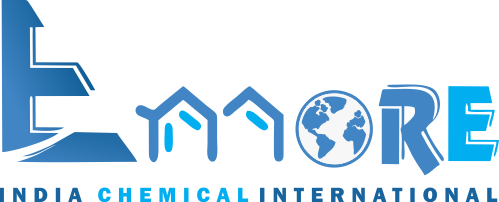Antifreeze manufacturer | supplier quality antifreeze coolants liqid in chennai India
Ennore india chemicals supplier and manufactures quality antifreeze coolants liqid and heat transfer fluids for automotive and industrial applications in Chennai india . We also offer innovative, competitive and efficient aqueous solutions to provide optimised thermal heat transfer and corrosion protection for your cooling system.
An antifreeze is an additive which lowers the freezing point of a water-based liquid and increases its boiling point. An antifreeze mixture is used to achieve freezing-point depression for cold environments and also achieves boiling-point elevation ("anti-boil") to allow higher coolant temperature. Freezing and boiling points are colligative properties of a solution, which depend on the concentration of the dissolved substance.
Because water has good properties as a coolant, water plus antifreeze is used in internal combustion engines and other heat transfer applications, such as HVAC chillers and solar water heaters. The purpose of antifreeze is to prevent a rigid enclosure from bursting due to expansion when water freezes. Commercially, both the additive (pure concentrate) and the mixture (diluted solution) are called antifreeze, depending on the context. Careful selection of an antifreeze can enable a wide temperature range in which the mixture remains in the liquid phase, which is critical to efficient heat transfer and the proper functioning of heat exchangers.
Salts are frequently used for de-icing, but salt solutions are not used for cooling systems because they can cause severe corrosion to metals. Instead, non-corrosive antifreezes are commonly used for critical de-icing, such as for aircraft wings.
Automotive and internal combustion engine use
Most automotive engines are "water"-cooled to remove waste heat, although the "water" is actually antifreeze/water mixture and not plain water. The term engine coolant is widely used in the automotive industry, which covers its primary function of convective heat transfer for internal combustion engines. When used in an automotive context, corrosion inhibitors are added to help protect vehicles' radiators, which often contain a range of electrochemically incompatible metals (aluminum, cast iron, copper, brass, solder, et cetera). Water pump seal lubricant is also added.
Antifreeze was developed to overcome the shortcomings of water as a heat transfer fluid. In some engines freeze plugs (engine block expansion plugs) are placed in areas of the engine block where coolant flows in order to protect the engine from freeze damage[citation needed] if the ambient temperature drops below the freezing point of the antifreeze/water mixture. These should not be confused with core plugs, whose purpose is to allow removal of sand used in the casting process of engine blocks (core plugs will be pushed out if the coolant freezes, though, assuming that they adjoin the coolant passages, which is not always the case).
On the other hand, if the engine coolant gets too hot, it might boil while inside the engine, causing voids (pockets of steam), leading to localized hot spots and the catastrophic failure of the engine. If plain water were to be used as an engine coolant, it would promote galvanic corrosion. Proper engine coolant and a pressurized coolant system can help obviate the problems which make plain water incompatible with automotive engines. With proper antifreeze, a wide temperature range can be tolerated by the engine coolant, such as −34 °F (−37 °C) to +265 °F (129 °C) for 50% (by volume) propylene glycol diluted with water and a 15 psi pressurized coolant system.
Early engine coolant antifreeze was methanol (methyl alcohol). Methanol was widely used in windshield fluids, however, in Europe, due to new REACH legislation, the use of methanol in windshield fluids is limited to 5% and in the near future will be further reduced to 3%. As radiator caps were vented, not sealed, the methanol was lost to evaporation, requiring frequent replenishment to avoid freezing of the coolant. Methanol also accelerates corrosion of the metals, especially aluminum, used in the engine and cooling systems. Ethylene glycol was developed, and soon[when?] replaced methanol as an engine cooling system antifreeze. It has a very low volatility compared to methanol and to water. Before the 1950s, coolant systems were unpressurized and the engine was often cooler than modern automotive engines. By pressurizing the coolant system with a radiator cap, the boiling point of the fluid is increased, permitting higher engine temperatures and better fuel efficiency. Pressurized systems do not appreciably change the freezing point. Later propylene glycol was introduced due to its environmental credentials.
Other uses
The most common water-based antifreeze solutions used in electronics cooling are mixtures of water and either ethylene glycol (EGW) or propylene glycol (PGW). The use of ethylene glycol has a longer history, especially in the automotive industry. However, EGW solutions formulated for the automotive industry often have silicate based rust inhibitors that can coat and/or clog heat exchanger surfaces. Ethylene glycol is listed as a toxic chemical requiring care in handling and disposal.
Ethylene glycol has desirable thermal properties, including a high boiling point, low freezing point, stability over a wide range of temperatures, and high specific heat and thermal conductivity. It also has a low viscosity and, therefore, reduced pumping requirements. Although EGW has more desirable physical properties than PGW, the latter coolant is used in applications where toxicity might be a concern. PGW is generally recognized as safe for use in food or food processing applications, and can also be used in enclosed spaces.
Similar mixtures are commonly used in HVAC and industrial heating or cooling systems as a high-capacity heat transfer medium. Many formulations have corrosion inhibitors, and it is expected that these chemicals will be replenished (manually or under automatic control) to keep expensive piping and equipment from corroding.

